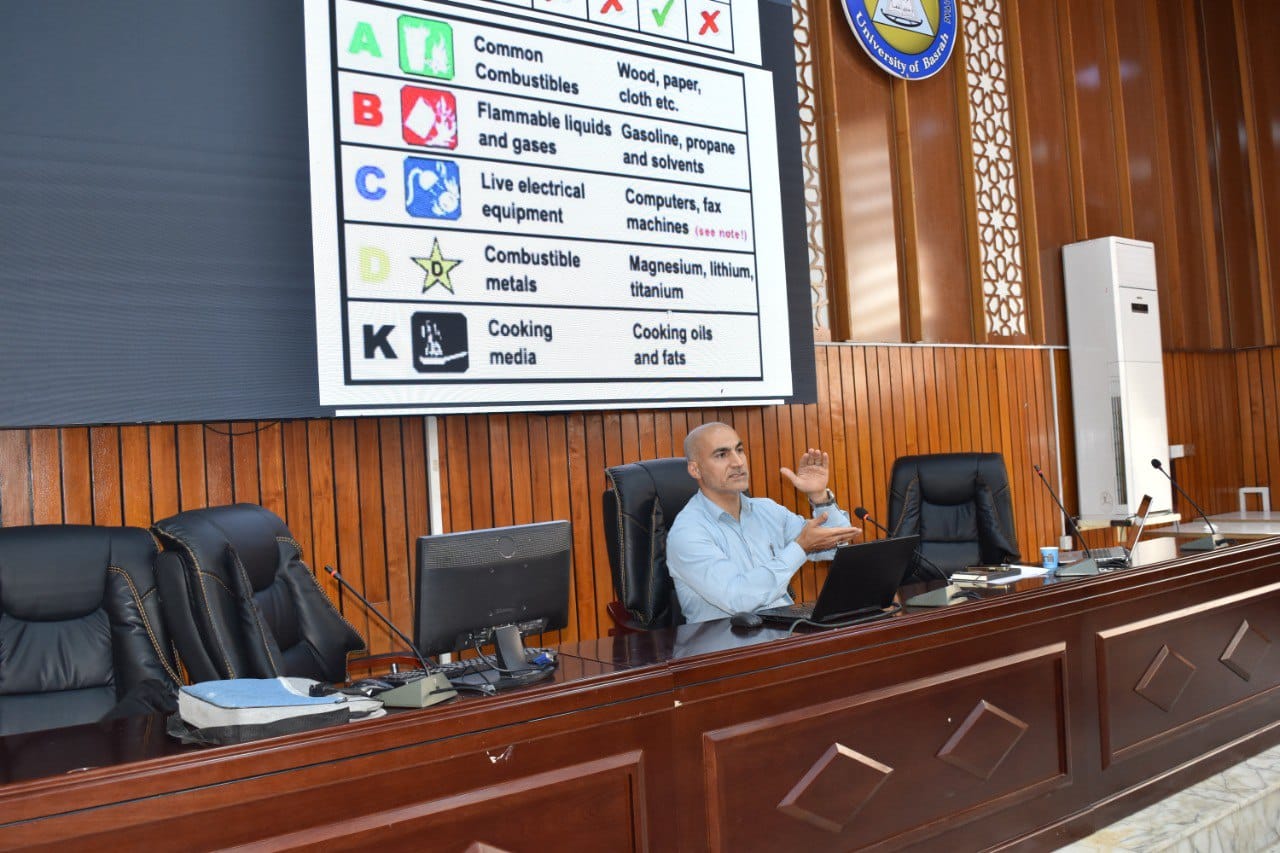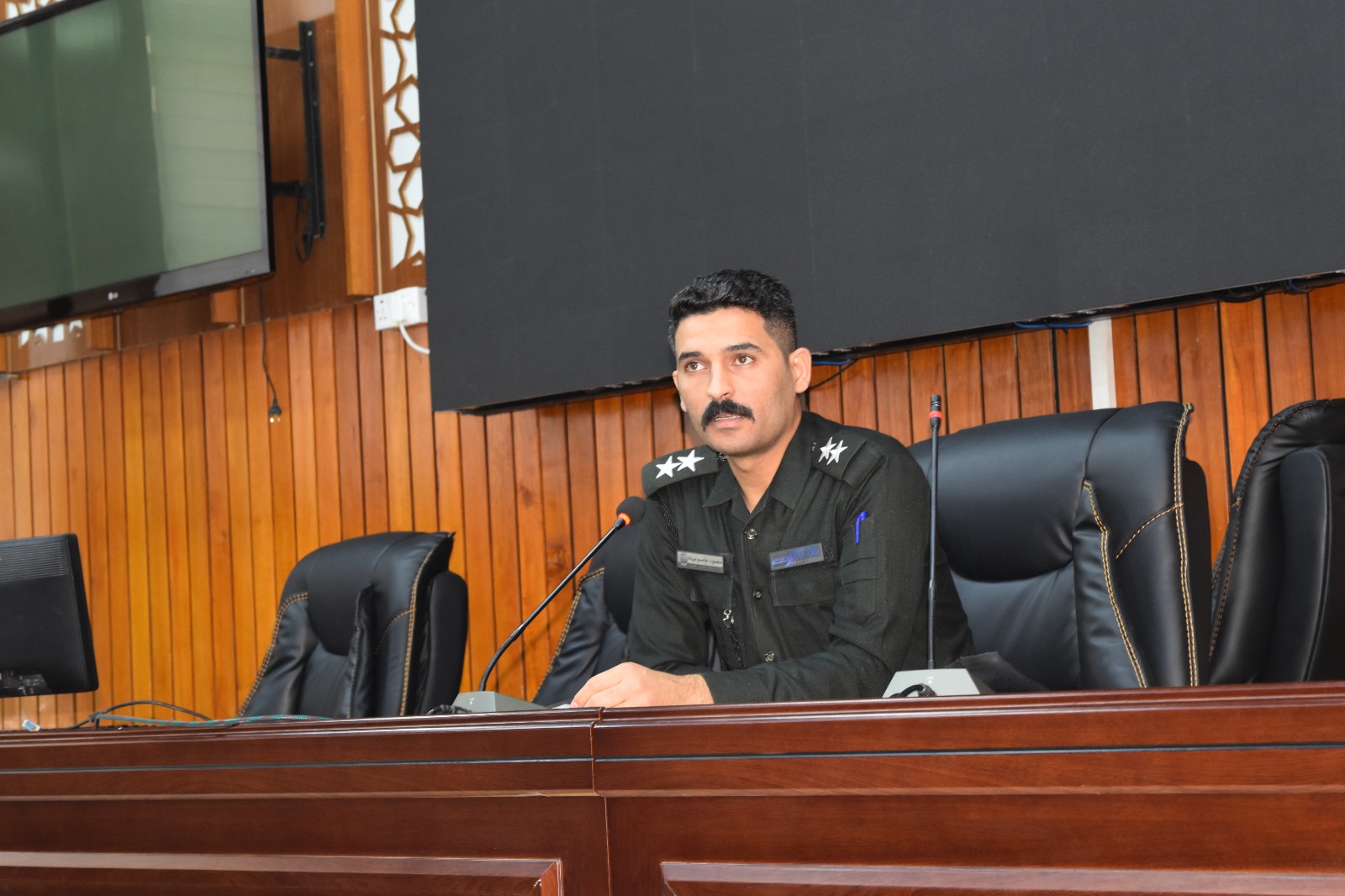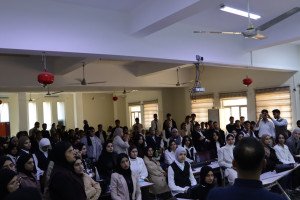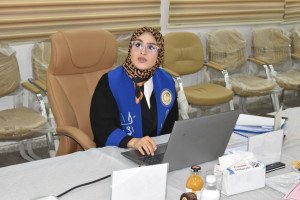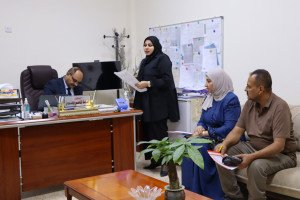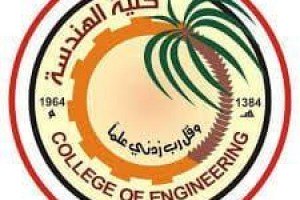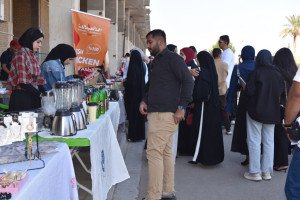
Under the patronage of the President of the University of Basra, Prof. Dr. Muhannad Jawad Kazim Al-Asadi, the Dean of the College of Engineering, Prof. Dr. Mufid Turki Rashid, and the Chairman of the Chemical, Biological, Radiological and Nuclear Safety Committee (CBRN) Prof. Dr. Ali Jamil, and in coordination with the Center for Development and Continuing Education
The College of Engineering organized a workshop on physical (radiation) safety in the presence of the Assistant Dean for Scientific Affairs, Prof. Dr. Munir Abdul Jalil Ismail, and the Director of Graduate Studies, Dr. Osama Naeem Jassim, and under the supervision of Ms. Shorouk Shaber Al-Moussawi, a member of the College of Engineering in the Central Committee (CBRN) and a number of professors. This course includes postgraduate students, doctorates and masters, from the departments of the College of Engineering, the Department of Earth Science, Physics and Agricultural Mechanization. It lasts for five days. A number of professors from various colleges and specializations lecture in the course. The course aims to establish correct scientific foundations to avoid various radiations and injuries resulting from work, permanent prevention and occupational safety to provide The best possible protection for the human factor and the preservation of lives and property and ways to deal with each case or injury during field work in a scientific and studied manner to avoid accidents during work and reduce, limit and control them by spreading the preventive culture to reduce disasters, accidents and emergencies that may occur in the field of work. On the first day, a lecture was given on the objectives of occupational safety and health by Dr. Haifa Latif Suwadi, a lecturer in the Department of Chemical Engineering, summarized in several points:
First, protecting production elements from damage and harm that may befall them as a result of work accidents and injuries by applying a set of preventive measures and precautions with the aim of ensuring a safe work environment free of risks and diseases for both workers and visitors to the educational institution by applying the following measures and precautions:
Second, providing a safe work environment that achieves prevention from risks for visitors to industrial institutions and their neighbors and workers by creating the necessary precautions and preventive measures. Third: Protecting production elements from damage and loss resulting from work accidents, including machines, equipment, devices and equipment (raw materials, manufactured materials and those under manufacturing)
Fourth: Reducing expenses related to lost work time resulting from work injuries and occupational diseases, the costs of replacing the worker, training him and his replacement, and the expenses resulting from this in terms of delays in completing the work and delivery dates.
Fifth: Creating awareness among workers regarding safe methods and ways to perform work and the importance of adhering to safety rules, which will support occupational safety and health, as well as raising workers' morale and increasing their self-confidence, thus increasing their productivity.
Sixth: Reducing the cost of production by providing the funds paid as a result of work accidents from compensation and expenses for treatment, transportation, repair and replacement of equipment, devices and facilities that are exposed to damage and destruction.
